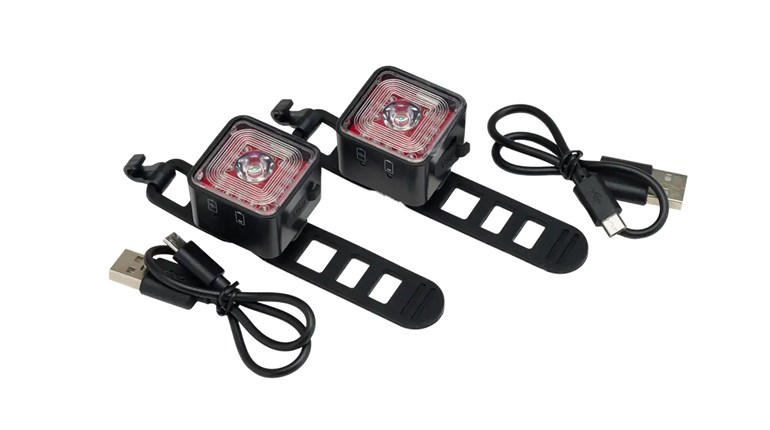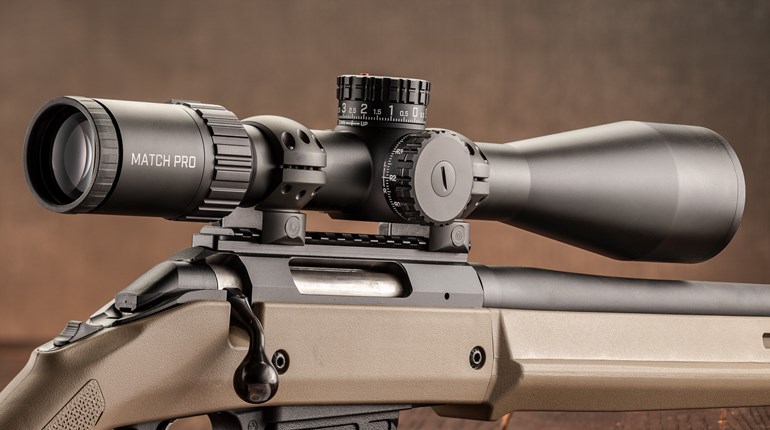
When it comes to shooting fun, long-range targets present some of the most challenging and entertaining opportunities of all. Combine outstanding long-range target stages with an opportunity to help veterans through a first-class organization like Honored American Veterans Afield (HAVA), and the decision to sign up is a no-brainer.

On April 9 and 10, some of the finest long-range shooters in the country descended on a shooting range just south of Albuquerque, N.M., for the 2016 New Mexico Precision Rifle Championship. As part of the Precision Rifle Series (PRS), the shooting would involve mainly reactive steel targets of various shapes and sizes, ranging from 200 to 1,000 yards.
Although I have a lot of experience with long-range rifle matches, this was my first try at a PRS match. Match Director Tate Moots, a longtime pistol, rifle and 3-gun competitor, has run this match for several years in a row, and it showed. Everything was well organized and ran on schedule, despite a fog delay Saturday morning. Yes, a fog delay in the high desert of New Mexico.
The Zia Shooting Range, just outside Kirtland AFB, is considered a square range, which makes things interesting when trying to figure out a way to get in some distance shooting. Consequently, some stages were set up where you would shoot sideways across the range instead of the more traditional straight downrange presentation.
Many of the shooting challenges presented to us would not involve bipods. In fact, I spent very little time on my belly using my bipod this match. Tate had dreamt up 20 different stages, most involving multiple shooting positions, all with very tight time limits. The time limits added another factor/strategy of focusing on hits when you knew you had time, and avoiding things that you knew you could not hit or that the set-up would take too much time. Most stages required eight to 10 shots, and typical time limit was about 90 seconds.
For this match, I grabbed my trusty Accuracy International AXMC chambered in .243, shooting 115-grain Sierra/DTAC bullets. On top I used a Schmidt & Bender 5-25 scope, and outfitted the rifle with an Atlas bipod. I also used a Thunderbeast Arms Ultra 7 suppressor to keep things quiet and polite.A really fun stage involved a 55-gallon drum partially filled with water that you had to push from firing point to firing point.
One of my strong points is setting up in awkward positions in minimal time. But for this match many of the positions were difficult to set up in, even with the help of shooting sticks and/or a tripod.
In the past couple years many shooters have begun using tripods to aid in stability. I normally use a sling to help stability, but on this weekend it was pretty much a carrying strap for all but one stage. That one stage happened to be four positions (standing, kneeling, sitting and prone) all unsupported, shooting at a small target 400-plus yards away. As I transitioned from sitting and into prone I ran out of time. Even though I didn’t get a chance to get my prone shots in, I did manage two offhand hits.
On Sunday morning we started out shooting four targets at 1,000 yards. There’s nothing like a cold-bore shot at 1,000 yards right off the bat. With a total of 10 rounds, competitors had to shoot four targets ranging from a 36-by-36 square to a 12-inch diamond. After hitting the largest target, you could go down the line to the next target. Only after hitting all four targets could you go back and gain more points by hitting more targets until you ran out of time or ammo. My first shot went quite a bit low but right on my wind call. Luckily I was able to see the impact and correct for it. Turns out cold air is pretty dense compared to the hot dry air of the day before. That density altitude change was a little detail I totally forgot about. I could have used that shot later in the stage. One shooter on our squad, Scotty D., hit all four targets and proceeded to connect several more times with his Remington 700 chambered in 6 Dasher.
My favorite stage, shooting off of a pile of tractor tires, came later that morning. In total, there were four positions on the tires and one prone underneath them. Nobody went 10-for-10 on this stage, with only a few people hitting nine. I was very happy with my eight hits.
Another really fun stage involved a 55-gallon drum partially filled with water that you had to push from firing point to firing point. Then, to make it more exciting, you had to shoot off the barrel while the water sloshed around inside. Timing was everything here.
Even more challenging was the simulated rooftop stage, with a small 8-inch target at around 300 yards and another about 450 yards away requiring eight shots total. Interestingly, here you had two rooftops to deal with—one that slanted away from you, and the other that slanted toward you. Most people used tall bipods or their tripod for forward support for the first position and thought it was surprisingly stable. For the other rooftop, everyone just laid down somewhat prone-ish. I might have been happy with my four hits, but it was only half of one person’s mad skills. An eight-hit performance here was a pretty cool thing to watch.More important than that, he donates a huge portion of the match proceeds to the Honored American Veterans Afield.
At the end of the match Marcus Blanchard had not only hit eight shots off the rooftops, but had also solidly won the match, hitting 10 more targets than the nearest competitor. It is no wonder he is sponsored by Kelbly actions and Vortex optics.
The number two shooter, Jake Vibbert, did a very cool thing when it was his turn to visit the prize table: He donated his trip to the table to the last-place shooter. That is sportsmanship at the highest level. Now that shooter is the proud owner of a brand-new $3,000 U.S. Optics scope to use at his next PRS match.
Moots was able to put together an incredible prize table. More important than that, though, he donates a huge portion of the match proceeds to the Honored American Veterans Afield. HAVA gets disabled and injured veterans back into normal life through participation in outdoor events and activities. It’s a very worthwhile organization that the firearms industry is embracing.
I can’t wait for next year’s match. Now I know what to work on. When I see something laying on the ground that looks like I can’t shoot off it, I have to just figure out a way and make the hit.
Tom “Hoser” Freeman has served in the United States Air Force for more than 20 years. He is an accomplished competitive shooter and a frequent contributor to NRA American Warrior and America’s 1st Freedom magazines.


































